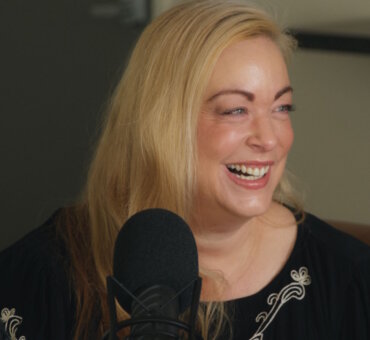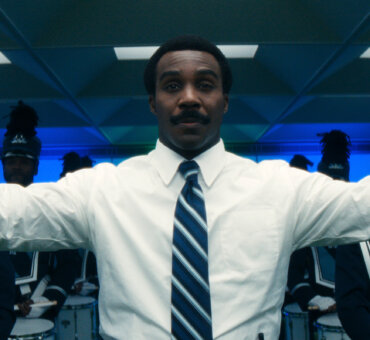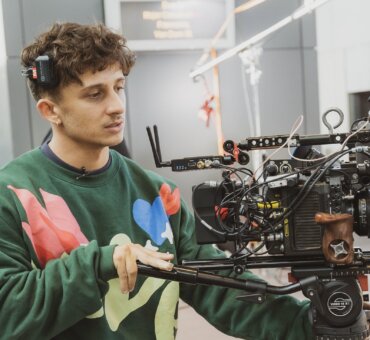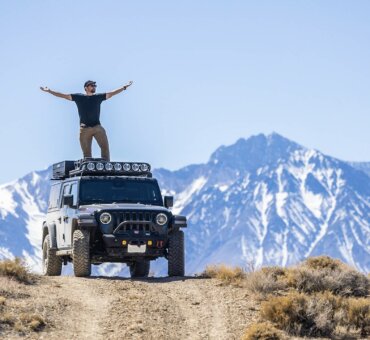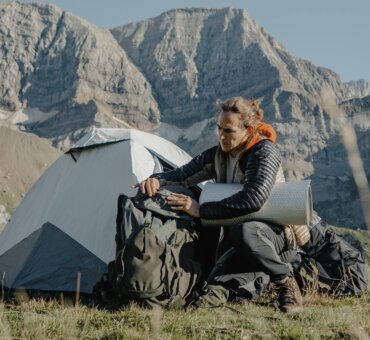To say Mark Boneʼs resume is impressive would be an understatement. The Toronto-based filmmaker has directed numerous documentaries, including CNN Filmsʼ 58 Hours: The Baby Jessica Story and award-winning films such as Battleground and OKAY! The ASD Band Film. Heʼs also directed commercial campaigns for global brands like Mercedes-Benz, Nike, BMW, and Nikon. Mark captures stories with a dynamic cinéma vérité style, and those aiming to emulate his impressive career trajectory should start by subscribing to his YouTube channel. With cinematography insight, directing tips, and equipment reviews, Mark shares his experience on how to make films better.
His recent video—Top 3 Film Editing Tips—is a great place to start. Mark teams up with editor Lewis Gordon (the award-winning editor behind Nikeʼs Big Bet, No Country Is An Island, and more) to discuss three film-editing tips that can take your documentaries to the next level.
Donʼt use everything
“Just because you have it doesnʼt mean you use it. Your job is to only offer the audience what they need to know in the shortest time possible,” Mark explains. “We all know what it looks like for someone to walk into a house. So just choose the one or two shots that depict that in the best way possible.” Lewis agrees. “Coverage is great. But for DPs, having quality is better than quantity,” he adds.
There is one exception to this guideline, though. “Unless youʼre trying to show that someone’s life has repetition,” Mark points out. “Or their life is monotonous, so lots of boring little moments happen throughout the day, which is the emotion of the film.”
Know your road map
Editors present audiences with their journey and inject emotion through pace, color, and music. To do so, editors must follow a road map: a beginning, middle, and end.
“Before I even dive into my Premiere Pro project, Iʼll get some cue cards and Post-Its and think of where to place scenes,” Lewis explains. “What that does is give you a place to start. Itʼll help you visualize ahead of time. Itʼs going to save you time in your edit, but itʼs also going to give you a really concise throughline.”
Edit for what is felt, not always seen
Now that youʼve shown whatʼs happening, you have to make them feel it. Using pace, color, and music, editors can connect the emotion in each scene.
“You can do that through editing and pace—how quickly or slowly youʼre cutting—and you can do that through color,” Lewis says. “And the third and perhaps the easiest and most impactful way is through music.”
“One composer I worked with explained to me that music is what’s felt, rather than seen,ʼ” Mark says. “Everything that your cinematographer has captured is whatʼs seen on camera, but then what you want people to feel really comes through in the sound design. It’s really amazing how much you can change from scene to scene with just music.”
“As far back as some of the first documentaries that I ever made, one of the first things I do before I even get on set is I go over to Musicbed,” Mark says. “I find the emotions Iʼm looking for, and I begin building a playlist that not only inspires what I shoot on set but gives me a roadmap in the edit on how to build out my story.”
“Every one of the films I’ve ever made—from documentaries from ten years ago up to my feature film OKAY!—I have used Musicbed as an integral part of the edit,” Mark says.
Featured Musicbed Music:
“The Book Makers” by Steven Gutheinz
“We Aren’t Scared Now” by Dustin Lau
Mark and Lewisʼ guidelines arenʼt just for documentary filmmakers—every editor and director can benefit from these takeaways. As you set the tone in each scene, understand the feeling youʼre trying to share with your audience. And if you aim to inject emotion through music, build your filmʼs roadmap with Musicbed.
Interested in learning more about documentary filmmaking from Mark Bone? Check out his community and academy of over 4000+ filmmakers, The Art of Documentary. For more information and sign up to be notified of enrollment opening in March 2023, head to their website: https://theartofdocumentary.com/


